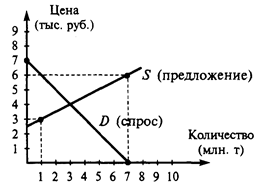Tort law’s relationship to criminal and contract law
The concept of tort — a wrongful act among private individuals — exists in most modern systems of law. The definitions of many torts closely resemble definitions of crimes. For example, the tort of conversion in English law covers taking, destroying or selling someone else’s goods, as does the crime of theft. When a tort is committed, the same act is often also a crime. But the essential difference between torts and crimes is that the former are the subject of civil law disputes between private individuals, and the latter are prosecuted by the state. Criminal law requires that the wrong be defined beforehand. Citizens then owe a duty to society not to commit criminal acts. When a crime is commited, however, it is a society that has been injured because it is the peace of society that has been violated. Therefore it is up to the prosecutor for the state (or federal) government to seek the fining and/or imprisonment of the violator on behalf of society. Tort law, on the other hand, is far more flexible than criminal law. It recognizes only a general duty of each citizen to refrain from harming another in negligent or intentional ways. The specific harmful act does not have to be identified beforehand and could occur in an ever-growing number of possible ways. If such harm occurs, it is then up to the injured person to seek damages and/or other suitable remedies in court. These available remedies are far less severe that the fine and/or imprisonment punishments meted out to violators of the criminal law. However, it should be realized that criminal acts often include conduct that constitutes a tort. Sometimes an individual takes an action in the law of tort because he has been the victim of the crime but has gained no benefit from the criminal prosecution. Sometimes there is no criminal prosecution because the police do not feel they have enough evidence or they feel that the matter is more of a private dispute than one involving public law and order. And sometimes it is difficult to find a criminal law which covers a tortious act. For example, simply entering land without the owner’s permission is not a crime in English law. It is, however, the tort of trespass. The police cannot take any action unless the trespasser commits certain crimes such as displacing the legal occupier and refusing to leave, threatening violence, or damaging property. In order to prevent trespass or to get compensation for any inconvenience caused, the occupier will therefore have to start a civil action in tort. There are other differences between torts and crimes. As for all civil actions, the standard of proof required is lower than in criminal prosecutions. And for many torts it is not necessary to show any particular mental element, so tort actions are often appropriate in the case of accidents. Tort law also differs from contract law. For example, even if a person suffers directly from someone else’s breach of contract, he does not have the capacity to sue in contract unless he was a party to the contract (there are a few special exceptions). As with criminal law, under contract law the enforceable duties are defined beforehand. However, the definition of those duties is written by the parties to the contract and not by society. In addition, the contractual parties owe the duties primarily to each other. It is up to the party injured under the contract to sue to collect damages when such a duty has been unfulfilled or violated. If often happens that a person who suffers a wrong finds that he has the choice in the law of contract to sue either in the law of contract or in tort. For example, if I am injured in a taxi because of the driver’s careless driving I could sue the driver for breach of an unwritten contract to take me to the airport, or I could sue him for the tort of negligence. The choice may depend upon which case is easier to prove, and whether I am likely to get larger damages under the law of contract or the law of tort. In contract, the aim of damages is to put the plaintiff in the position that he would have been in if the contract had been performed; damages in tort are to restore the position there would have been if the tort had not occurred. Sometimes these two positions are different and represent different amounts of monetary compensation.
|




